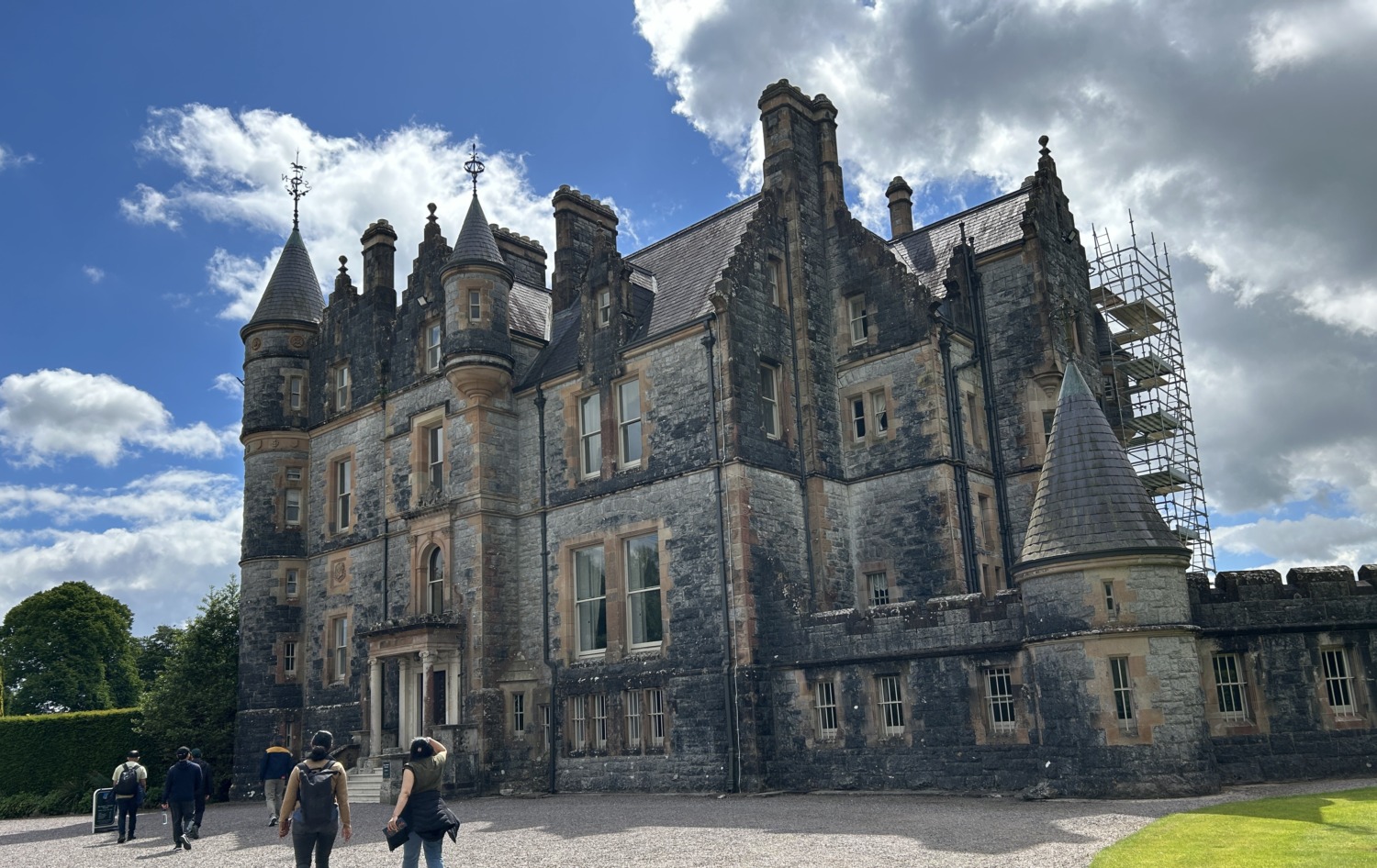The big thing on our tour for this day was Blarney Castle. I’m sure you’ve heard of the Blarney Stone. It
is located at the castle. Supposedly if you kiss it, you will get the gift of the gab. Either great eloquence
or the ability to flatter, depending on how you look at it.
Blarney Castle was built in 1466 by Cormac MacCarthy, an Irish chieftain. The castle was abandoned in 1874 when a manor house was built on the grounds. The legend of the Blarney Stone began in the 18th century.
The only part of the castle that you can really visit today is the tower. The Blarney Stone is the top of 5e
tower. There is one set of steps to get up and down the tower and a long line of people waiting to go up
the steps. Tom and I were not interested in standing in line or kissing the Blarney Stone, although we
would have liked to climb the tower. Only one person in our group, Susan, climbed the tower. She said
the views were excellent, but she waited in line for over an hour.
Susan did not, however, kiss the Blarney Stone. In order to kiss it, you have to sit on a ledge, then bend
over backward and kiss it upside down. Once she got up there, she chickened out. I don’t blame her. It
was one reason I wasn’t interested. The position. The line. The germs. And who even wants the gift of
the gab? Not me!
Tom and I had a marvelous time walking around the 60 acres of gardens and parkland around Blarney
Castle. We saw the poison garden, which included carefully contained poison ivy from the US. Planting that
seemed like a dangerous decision to me. There was a big sign telling people not to touch. There was
hemlock and foxglove. Rhubarb and Cherry Laurel were also present.
We wandered the paths of the rock garden for a while, enjoying the seven sisters stones and the witch
rock. The Vietnamese garden was beautiful and secluded. There were thousands of people on the
castle grounds, but once we got on some of trails beyond the castle itself, there weren’t as many
people. We found the estate home, which still belongs to and is lived in by the Colthurst family. We could have taken a tour of the house but didn’t want to pay another 10 euros each.
I packed our lunch, having leftover rolls from supper the night before. We liberated some meat and
cheese from breakfast at the hotel. Tom and I ate our lunch in a tiny gazebo so tucked away in the
woods, it wasn’t even on the map.
We saw a lot of interesting plants and learned some history. After a while we felt that we had seen
everything we wanted to, so we headed across the Blarney town square. Blarney was a planned mill
town, built at the beginning of the Industrial Revolution. Women, men, and children all worked long
days in the weaving mills. But it was also steady work that saw them through the potato famine and
other hard times. Fewer people emigrated from Blarney than a lot of other places in Ireland.
I was eager to go in the Blarney Woolen Mill, but it turned out to be a big souvenir shop instead of a mill.
You would think it would be easier to find a weaving mill in the UK and Ireland, considering how
important the woolen industry was. Oh well.
We climbed back on the bus with the rest of our tour group and headed to Cork, Ireland. Most of the
people on the bus were headed to Cobh, but Tom and I were there in April with the cruise ship. We
opted to stay in Cork. Reveling in our free time, I worked on some blog posts, and then we headed to a
Centra store to buy stuff for supper. On the handful of evenings we haven’t had supper included, Tom and I try to find a low-sodium salad and some chicken strips for supper. It isn’t an exciting supper, but
better for us than most of the included dinners we get.
While we ate, we decided to watch some television. We haven’t done that much. Whenever we turn
on the tv in the hotel rooms, the only choices are American reruns. We could have watched “Murder She
Wrote” or “Columbo,” but I don’t want to watch American tv while we are in Ireland. Instead, we found
the movie Cromwell starring Richard Harris and Alec Guinness. Richard Harris was born in Limerick, Ireland.
Our days in England and Scotland were full and action-packed. The tour is taking Ireland at a slower
pace. Tom and I have appreciated having more free time and fewer provided meals. It gives us a chance
to explore as we want.





